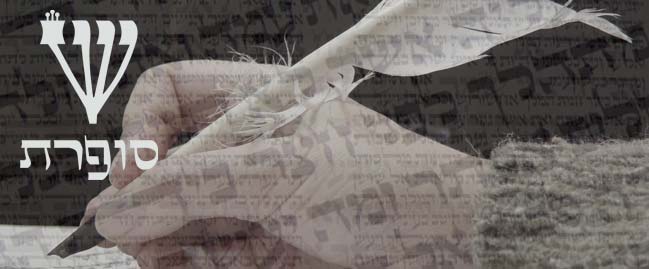QAME'A - SEGULAH
בס"ד
I noticed a while back while learning that the red cord Joshua ("saviour") tells Rachav ("wide" or "width") to suspend from her window so that the Israelite soldiers know to spare her family is referred to in the Torah as "...et-tiqvat hu shani..." - a "red hope".
Otherwise popularly known as "the red bendel". What is the shoresh/etymology of "bendel"? It means "ribbon" in Yiddish.
Further to this post, are amulets considered practical Kabalah? Do they work? Rav Yitzchak Ginsburg had this to say:
"Amulets are on the border between practical Kabbalah and an external manifestation of Kabbalah, such as name calculation. There is a source for amulets in the Torah. When a great sage writes Holy Names, (without pronouncing them) on parchment and puts it into a container which is worn by the recipient, it can possess healing and spiritual powers. At the beginning of the Ba'al Shem Tov's life, since he was a healer, he used amulets. Sometimes the amulet works because of the faith of the recipient in the spiritual power of the amulet. At the end of his life, the Ba'al Shem Tov never wrote the Names of God, only his own signature, Yisrael ben Sara or Yisrael ben Eliezer. This was the ultimate amulet given by the Ba'al Shem Tov.
We know that the Rebbe of Lubavitch gave dollars to people for the sake of charity. He gave an actual physical gift, but it was connected to the spiritual mitzvah ("commandment") of charity, in the merit of which blessings could be effected. The Sages teach us that whoever receives a coin from the hands of Job (a tzaddik) receives a blessing. This is the source in the Talmud that receiving a coin from a great tzaddik brings with it a blessing. Thus we see that there are amulets that are permissible. The determining factor is the righteousness and intentions of the person giving the amulet."
Yet, I travel with a siddur, a chumash, a volume of Zohar & a Lubavitch Tefilat Haderekh (traveler's prayer) which I recite as we set out on each day's journey & our car stilll breaks down. So either my soul is so rotten that these have no effect or I'm actually avoiding a much worse fate than being temporarily stranded on the eastern Washington/Oregon border...
Food for thought...
May The Merciful One show the greatest mercy.
Shabbat Shalom














11 Comments:
Maybe you need to get the Zohar on microfilm, stuff it into a mezuzah case, and stick that on your car door. All the doors, to be on the safe side - and hang a picture of the Rebbe from the rearview mirror on a red string. Seriously - I'm sorry your car isn't behaving. Have a nice shabbat, at least it won't be an issue then.
Again???!!!
בס"ד
'fraid so...as our host said, "Hey, you guys are supposed to stay on G@d's good side..."
Obviously no amulet or any kind of religious article has the power to change G@d's will, so I guess I'll just pray harder...& with more humility.
This comment has been removed by a blog administrator.
As I mentioned on DovBear's blog a while ago, the red string in the Haftarah reminds me not only of the bendel, but also of the blood smeared over the doorways during the Exodus and the red string tied around the scapegoat. I, therefore, find it a very powerful and valid Jewish symbol- it represents the covenant, and faith in G-d's ability to rescue and redeem us and to save us.
Rather than something that might keep us physically safe, perhaps the
power of the symbols is in their keeping us spiritually safe more than physically safe. Like all ritual objects, I think that anything that enhances our mindfulness of G-d, adds to our kavannah and devotion, keeps us in that supernal world, connected to the Source of all things. In that world, there is nothing to fear, no matter what the outcome.
I sometimes wear a silver brooch which is a replica of a 19th century Persian amulet which is engraved with the 72 letter name of G-d and the 4 protecting angels. It's quite beautiful. I am attracted to the richness of the symbolism, it charges my imagination and aesthetically it makes me swoon. I hope it works!
I think Madonna and her ilk, the Kabbalah centre, have bastardised and sucked the life out of the meaning of the bendel, and by default, amulets. I think that surrounding yourself with G-d's words, or symbols derived from the Torah, like wearing tzitzit or mezuzot, can keep us in a holy space.
I think the symbols are about connection and can be an expression of faith in the midst of fear. In that world, fear finds no home, and that is what we yearn for in our expression, a world without fear. Sometimes it is animalistic, fundamental, and sometimes it rises into the supernal. I think both are equally valid.
I wish I could believe that amulets, etc., protect us physically. I just don't know. Do we have proof? And really, does that really matter beyond being a comfort?
בס"ד
AMEYN, Barefoot!
Yes, absolutely. You said it all beautifully, as usual.
In answer to your last question & also as a response to NormalJew, amulets used to be an accepted part of medical practice. Rabbis write about experienced qame'a makers who have a proven record of making amulets which actually work. They also list the criteria for judging a good medical amulet (Shabbat 61b; Yoma 84a). & they put limits on the sanctity with which amulets may be treated, even ones with God's name inscribed on them (Shabbat 115b).
So...if we believe they are simply like medicine then that's kosher, but if we believe they can influence G@d that's idolatry. Only people can influence G@d (depending on how you interpret various stories in TaNaKH). But does that mean their writings can as well, as a Tzadiq seems to be able to?
So...if we believe they are simply like medicine then that's kosher, but if we believe they can influence G@d that's idolatry. Only people can influence G@d (depending on how you interpret various stories in TaNaKH). But does that mean their writings can as well, as a Tzadiq seems to be able to?
I don't get it. Comparing segulot to medicine, is like placing segulot in the realm of the natural?
That's considered kosher?
As for the writings of a Tzaddik. Who are we to say who is a tzaddik? Does a consensus make a tzaddik, when I understand that the 36 are hidden? It sounds like idolatry to me, to ascribe healing power to their writings (if tzaddikim actually exist). On the other hand, is it possible that if there is such a thing, that somehow anything about them brings us closer to G-d?
In my experience, I can't identify a tzaddik. But I do know that the behaviour of some people brings light to my world in an uncanny way. And given the surface of them, you would never know it.
As for the writing of Tzaddikim- I don't know. I'm skeptical. There is nothing like the power of deeds, I'm thinking. Anything else, IMO, is superstition. And very close to the idea of saints in the Christian religion. It makes me wonder why we want to ascribe so much power to individuals. Why we need an intercessor.
As for amulets that work: given my "soft" scientific bent, I doubt the proof. Are these stories? How does one determine that they worked? I'm asking because I want it to be true, rather than wanting to debunk it.
YEHEZKEL KAUFMANN thought that a Mosaic revolution in religious consciousness had been wrought from Sinai that dispensed with myth, just-so stories explaining how things are as the outcome of conflicts between the gods, and with magic, non-natural attempts to manipulate the cosmic order for desired ends. The Torah would not allow you to take part in the planting-time orgy in the fields the Cannanites used to guarantee a fecund harvest by "showing the gods how it's done," for example -- G-d would give a good harvest or not, so in fact you had less hope for one if you had taken part in the Canaanite orgy. You do what you can in the natural sphere by the sweat of your brow, you live as far as you can in love and justice obeying the mitzvot; then the rest is up to G-d, Whom you cannot compel. No magical means will avail to compel the natural order; only G-d can.
Gershom Scholem said Kabbalah restored myth to Judaism. We should add: though within an overall monism, considering that the myths in question would be e.g. the "breaking of the vessels." And K. restored a shine of legitimacy to the magical outlook that the Torah had nixed. K. gave a highfalutin rationale for popular superstitious practices that had never quite been spat out, so delicious is their appeal to our irrationality.
The Kabbalah Center, however, might insist giving them money for red thread bracelets is anything but irrational, and they'd bring arguments from (monist) myth. Maybe we should see the wearing of them as a bubgling attempt to cleave to G-d or off expression of Yiddishkeit. But in the end the bracelets and the like are impediments to our inheritance of Torah -- especially when those who use them, and are used by their merchandisers, ignore mitzvot like Shabbat and kashrut and give money to merchants instead of real tzedakah that could help mundane suffering. People who can only find the time to study Kabbalah are engaged in bitul Torah, wasting that time. Maybe we can use interest in esoteric Judaism as a stepping-stone to teaching obervance, teaching people about Shabbat in terms of how it was observed five centuries ago in Safed, for example. But I wonder if we wouldn't do better to leave study of Kabbalah to academics or those communities with long roots in it, like Chabad. Certainly all-night study on Shavuot and the Tu B'Shevat seder are worth keeping, but no self-respecting Jew should ever wear an amulet of any kind.
--DABODIUS
בס"ד
This is all incredible Torah you all are spewing out here! I want to properly digest it & respond with the consciousness it deserves. This means that we will have to fix the car AGAIN (we are now stuck in Colorado & this is the only net access I'll have 'til I don't know when) & then I will be able to bring my mind to this conversation better. So please have patience with my silence & please keep commenting!!!
בס"ד
"I don't get it. Comparing segulot to medicine, is like placing segulot in the realm of the natural?
That's considered kosher?"
Actually, once again, Barefoot, that depends on who you ask. But we have a very old tradition going back at least to Medieval Times where amulets were divided into categories of "qame'ot" for protection, "segulot" for empowerment & "refu'ot" for medical healing.
I agree with you that getting a bit of writing from a particular Rebbe (for example) sounds like idolatry, but in an age when science & magic & nature & religion had softer boundaries than today, how is it different to get a recommendation for a really effective Shiatsu practitioner?
There are arguments in the Talmud I've cited in this blog which go on to state that if a particular amulet "works" 3 times then it is considered an authentic amulet. Just as an amulet writer is considered authentic if s/he writes 3 different amulets which all "work".
בס"ד
Yehezkel - I hear your argument & I know of those who could dispute it point by point. However, I am not one of those folks. I suggest we learn to engage in respectful dialogue with those we disagree with, or not engage at all.
Post a Comment
<< Home